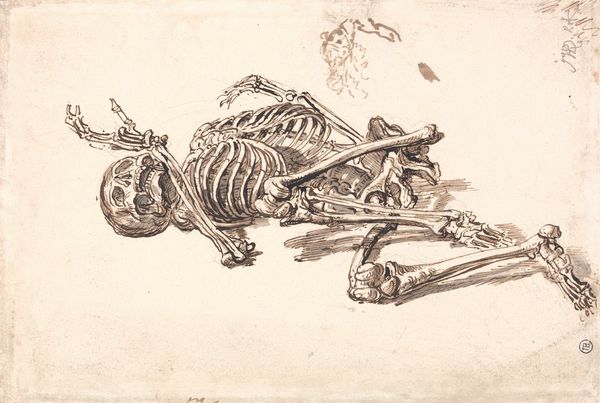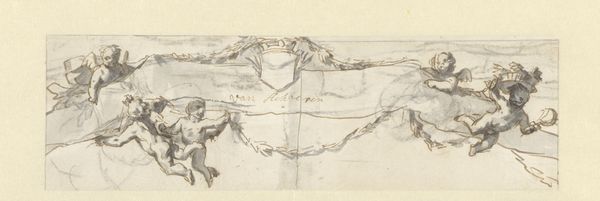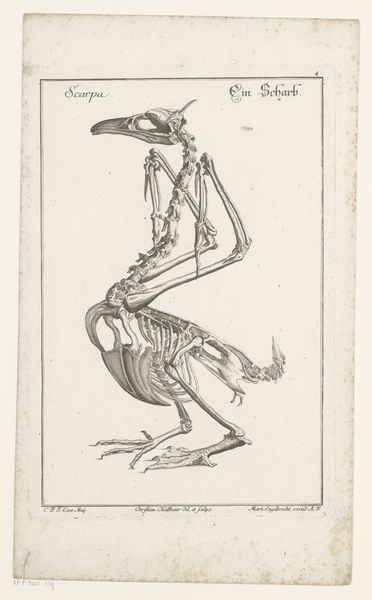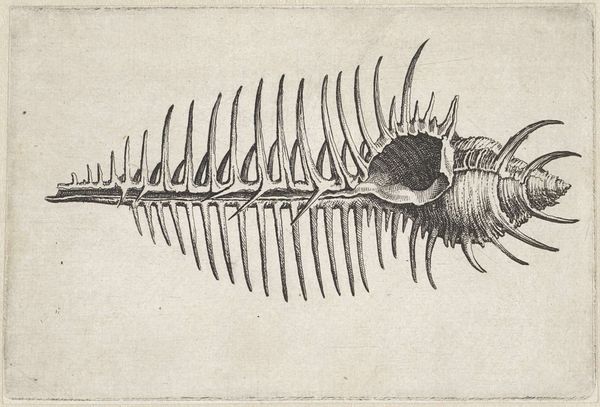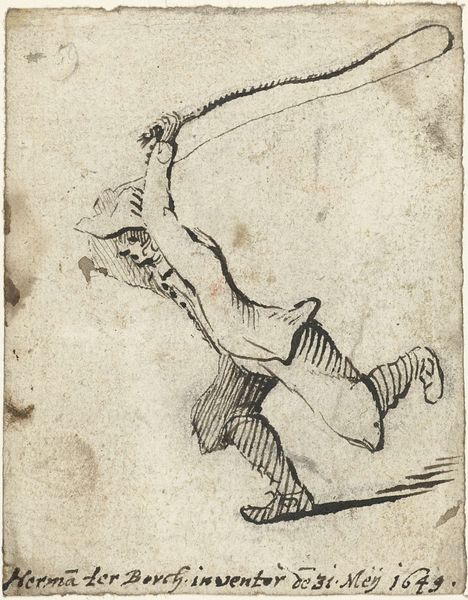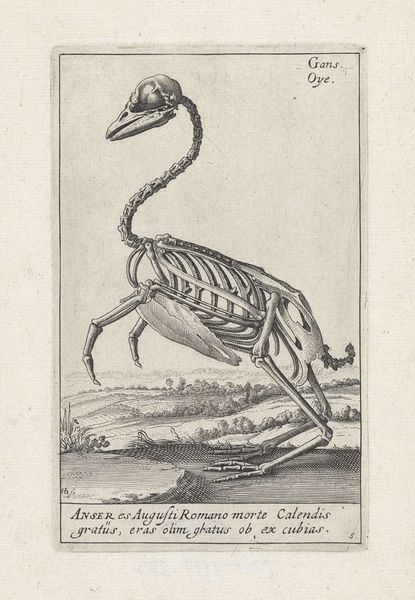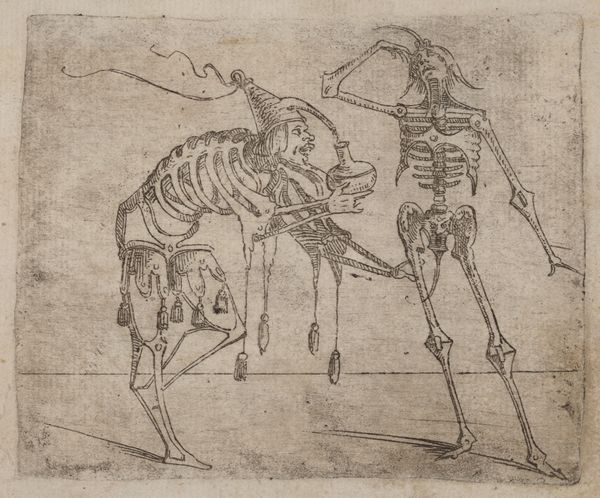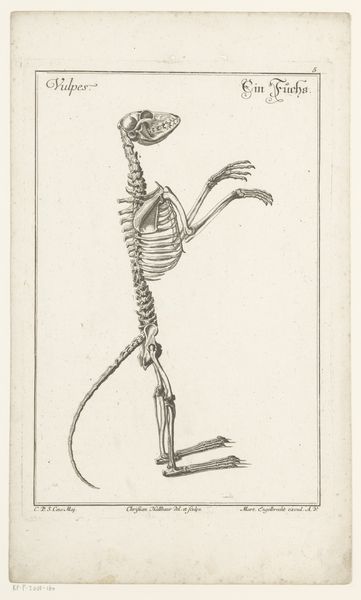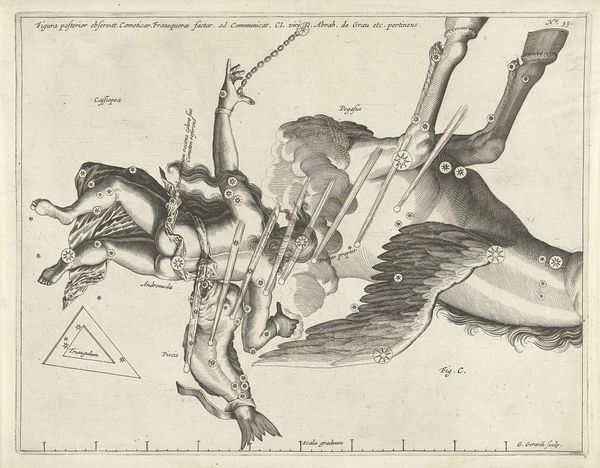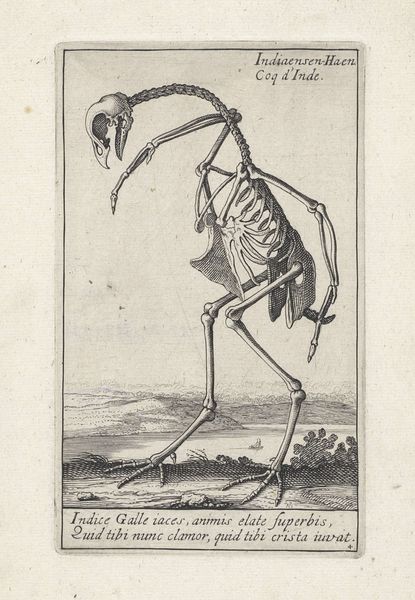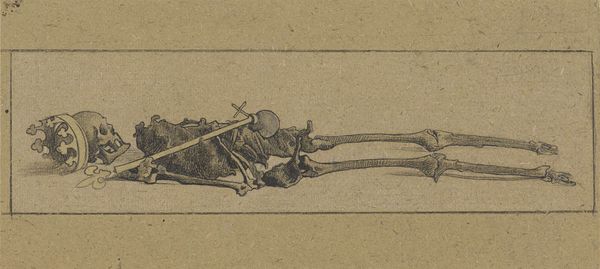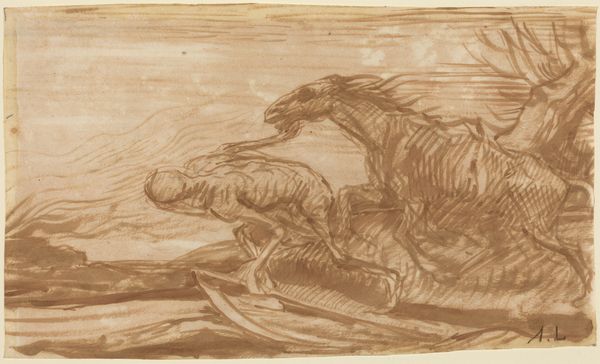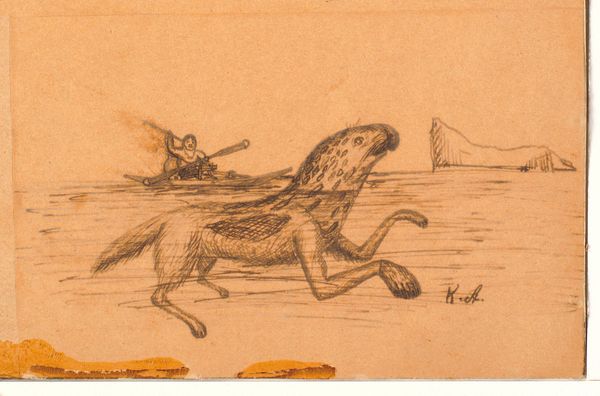
drawing, paper, ink
#
drawing
#
mannerism
#
figuration
#
paper
#
11_renaissance
#
ink
Dimensions: height 45 mm, width 174 mm
Copyright: Rijks Museum: Open Domain
Editor: Here we have Jacopo Ligozzi's "Skeleton of a Rat," dating from the late 16th or early 17th century. It's an ink drawing on paper. Honestly, it's both a bit unsettling and incredibly fascinating to see something so… fundamentally *there*, exposed. What do you see in this piece? Curator: I'm tickled by its frankness! There’s something deeply honest about laying bare, quite literally, the bare bones of existence. You know, Renaissance artists were fascinated with anatomy, but often with a heroic twist. Ligozzi gives us the unvarnished truth, or, at least, a meticulously rendered version of it. Have you noticed the incredible detail? Editor: I did! The way he captures each tiny vertebra... it’s almost obsessive. Curator: Exactly! And yet, beyond the scientific gaze, I sense a quiet meditation on mortality. It makes me wonder, doesn't it, about the stories this tiny skeleton could tell. A life lived scurrying in the shadows, perhaps? A little echo of “memento mori” whispered across the centuries. Or even, if you're feeling mischievous, a tongue-in-cheek poke at the vanity of us all, humans or rats alike! Editor: I hadn’t thought of it that way – a sort of egalitarian *memento mori* for all creatures. It makes me think about how art can find beauty and meaning in unexpected places. Curator: Indeed! It is both strangely beautiful and, as you say, meaningful, finding profundity in what is usually discarded or overlooked. I think it tells us to celebrate even the small details, down to the very structure that holds us all together...until it doesn’t. Editor: So, next time I see a rat, I might pause, and consider its…underlying structure? Curator: (laughs) Precisely! Look beyond the surface and acknowledge its brief dance in existence, rendered permanent, through art.
Comments
No comments
Be the first to comment and join the conversation on the ultimate creative platform.
